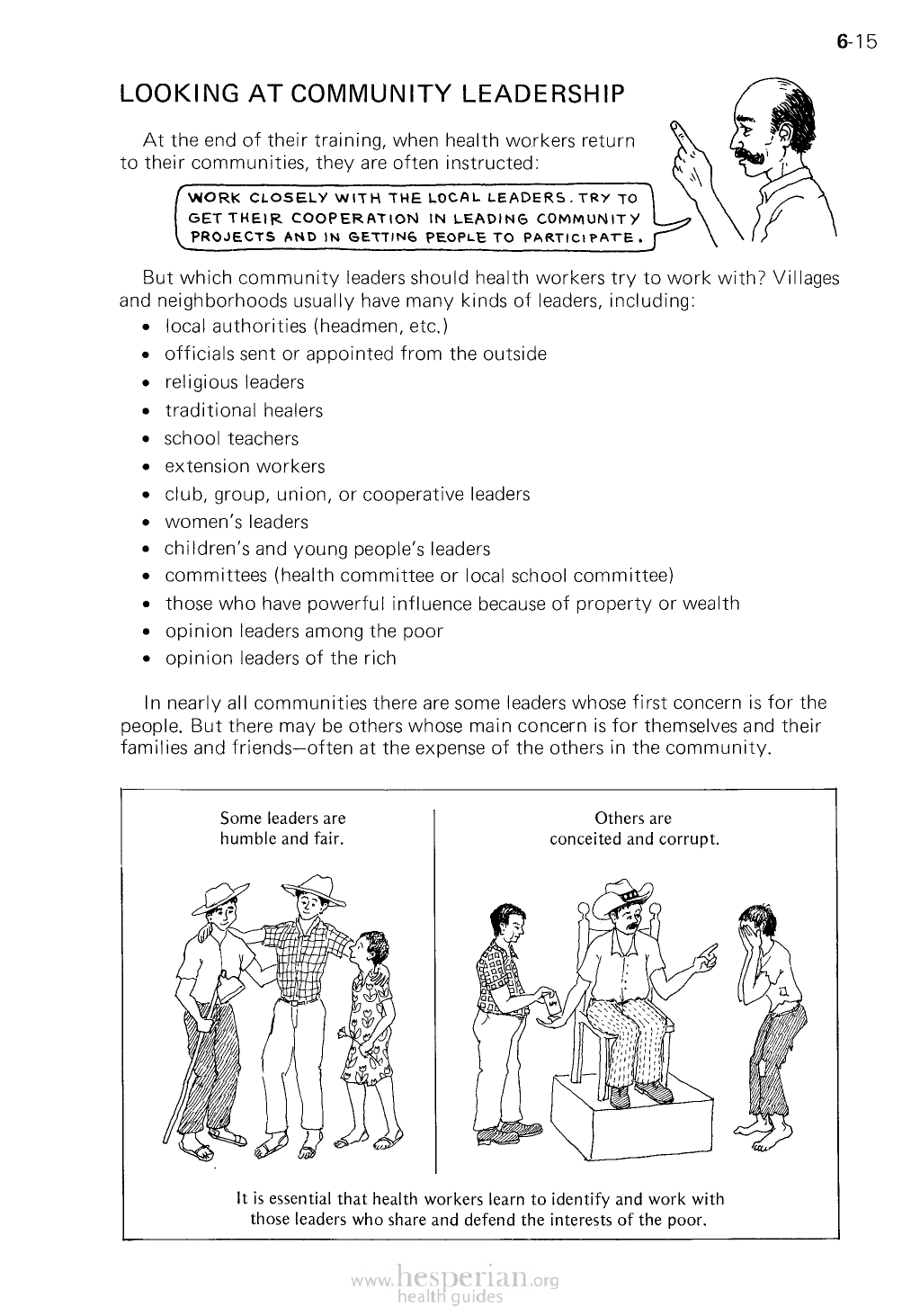
LOOKING AT COMMUNITY LEADERSHIP
At the end of their training, when health workers return to
their communities, they are often instructed:
6-15
But which community leaders should health workers try to work with? Villages
and neighborhoods usually have many kinds of leaders, including:
• local authorities (headmen, etc.)
• officials sent or appointed from the outside
• religious leaders
• traditional healers
• school teachers
• extension workers
• club, group, union, or cooperative leaders
• women’s leaders
• children’s and young people’s leaders
• committees (health committee or local school committee)
• those who have powerful influence because of property or wealth
• opinion leaders among the poor
• opinion leaders of the rich
In nearly all communities there are some leaders whose first concern is for the
people. But there may be others whose main concern is for themselves and their
families and friends—often at the expense of the others in the community.
Some leaders are
humble and fair.
Others are
conceited and corrupt.
It is essential that health workers learn to identify and work with
those leaders who share and defend the interests of the poor.